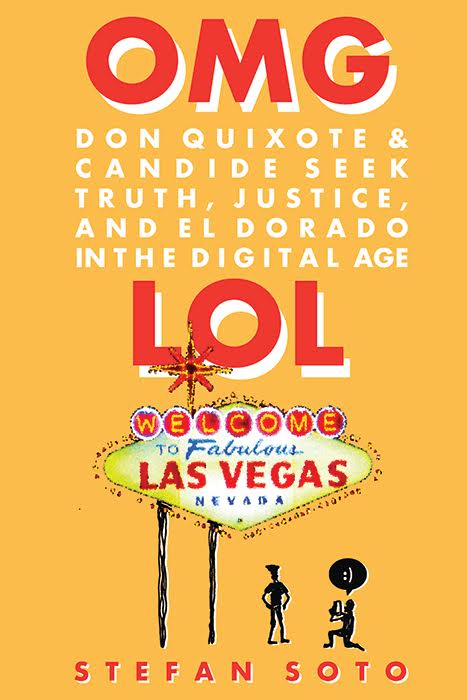Foreword Reviews of Don Quixote and Candide Seek Truth, Justice, and El Dorado in the Digital Age
Don Quixote and Candide Seek Truth, Justice, and El Dorado in the Digital Age is fanciful, intelligent entertainment, better sipped than gulped to enjoy the full effect.The picaresque novel gets a fresh spin in Stefan Soto’s time-twisting tale, Don Quixote and Candide Seek Truth, Justice, and El Dorado in the Digital Age.
Candide and Don Quixote, characters in books a hundred years apart, are very much alive when they meet by chance in tavern. Both mourn the fact that their great adventures are behind them, and decide to embark together on a final, bold journey—a search for the truth.
Soon they are on the road, bound by rail and sea for the New World, otherwise known as America. This is, however, no ordinary journey, for it traverses not only distance but also the infinite. Time has no boundaries, cell phones coexist with pirates, and the next text message might be from Sherlock Holmes.
The book is narrated by Candide, whose voice is pitch-perfect for Voltaire’s creation. Always susceptible to female charms, Candide also keeps a blog and is quick to embrace the wonders of technology. Don Quixote is also well drawn as an idealistic and melancholy knight dreaming of great deeds that will never come to pass. It’s a major achievement that these characters’ voices, though from different eras, are simultaneously clever, archaic, and appealing to contemporary ears.
As the journey unfolds, it draws in other familiar characters from the classics, all true to their originals, but all in slightly altered roles. They include Dr. Watson, Holmes’s right-hand man, who now has a syndicated television show; Cyrano de Bergerac as a forlorn railroad conductor; and Tom Sawyer and Huck Finn, who run a not-quite-honest salvage business. The structure of the book is episodic, and as these characters and a host of others are introduced and bid farewell, the pace is swift.
The writing is unfailingly clever, with many rewards for those well-versed in the classics and history—as when Don Quixote explains that he invented anagrams while standing in long lines during the Franco era. Though echoes of Cervantes and Voltaire’s original works are heard, recent reading isn’t necessary; Candide and Don Quixote both adroitly fill in the blanks by recounting their histories at the hands of their respective “biographers.”
Contemporary culture is also in play, as the quest for truth leads the adventurers to contemporary Las Vegas, and brings in the crew of the original Star Trek to shed light on the latest developments in time travel.
The swift pace slows with the introduction of Elizabeth Bennett, held captive by Long John Silver. Candide is instantly infatuated with the heroine of Pride and Prejudice, and volunteers to undertake her rescue, even though it means reuniting her with her true beloved, Mr. Darcy. This subplot goes on a bit too long and blunts the more interesting plot thread of whether and how Candide and Don Quixote are going to make their ways back to their own time zones.
Don Quixote and Candide Seek Truth, Justice, and El Dorado in the Digital Ageis fanciful, intelligent entertainment, better sipped than gulped to enjoy the full effect.
